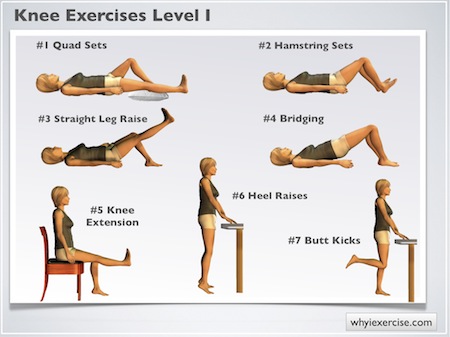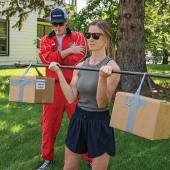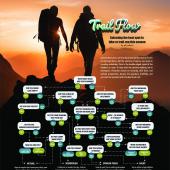Knee 911
Prepping your joints for the big season ahead.
After a psychotic mileage increase during my college running days, I blew out both my knees and ended up in physical therapy, sobbing for the entirety of my half-mile treadmill sessions because I just. wanted. to. run. As runners and hikers are aware, knee problems are among the most common injuries associated with endurance activities, carrying weight, and jarring descents. Luckily, there are precautions you can take to help prevent knee injuries and alleviate flare-ups.
Before You Go
For anyone planning a lengthy, elevation-heavy hiking trip this summer, such as backpacking in the Beartooths or Spanish Peaks, strengthening the muscles around your knees is imperative for aiding stability. Your knees take the brunt of jarring steps, so they’ll appreciate any help they can get. I like the three exercises below and use them to strengthen supporting muscles for my wobbly knees.
1) Quads: Place a pillow under your thigh. Raise your toes and press down on the pillow with your leg, holding for 10 seconds. 10-15 reps.
2) Hamstrings: Lie on your back with your knees bent and your toes pointed up. Dig with your heels and push back without moving your butt. Hold for a count of 10. 10-15 reps.
3) Leg Raises: Bridge up, with your shoulders and one heel on the ground. Raise one leg straight with your toes flexed, then raise and lower your leg (without bending your knee) 10 times. Keep your hips aligned throughout.
Aim for 3-4 sets per week, increasing the reps and duration as you get stronger.

On the Trail
The most common source of knee pain comes from IT band syndrome—aggravation of the tissue along the outside of your knees. Massaging the area, or foam rolling if you have access, can help reduce pain. Braces help as well—I like the Cho-Pat Dual-Action Knee Strap, a popular choice for distance hikers. Elastic bandages provide support, but make sure you wrap your knees correctly to avoid hindering movement.
Hikers and runners can also preserve their knees by side-stepping down steep grades, using hiking poles to help absorb impact, icing when necessary, and using supportive braces/wraps. Happy hiking!
O/B editor-at-large Maggie Slepian is an avid hiker and backpacker who will take on the fabled AT next year. This article is reprinted with permission from appalachiantrials.com.










